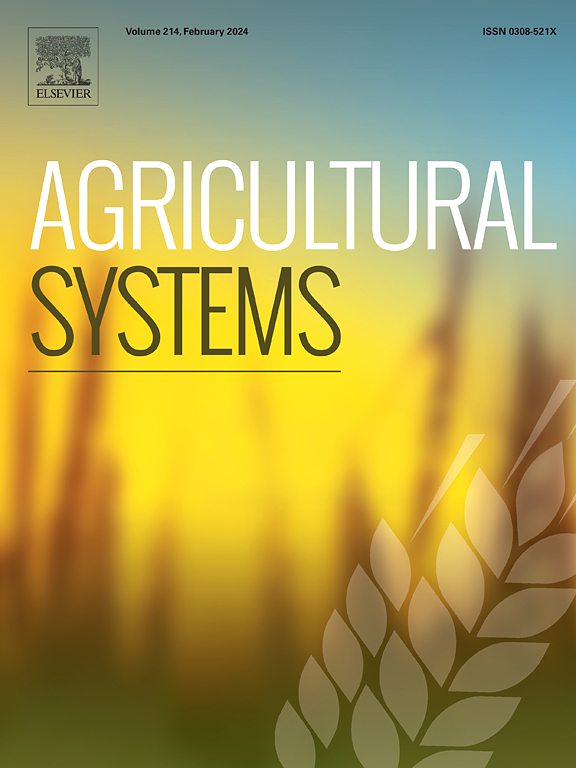Model-based decision support for the choice of active spring frost protection measures in apple production
IF 6.1
1区 农林科学
Q1 AGRICULTURE, MULTIDISCIPLINARY
引用次数: 0
Abstract
CONTEXT
Late spring frosts are a major problem for apple production in Germany. Frost events frequently lead to yield losses and quality reduction. This has motivated the development of several frost protection measures, which differ in terms of effectiveness, costs and workload. In many cases, it is an open question for fruit growers if investing in frost protection is worthwhile and which strategy would most positively affect their bottom line.
OBJECTIVE
To support decision-making, we applied a participatory process with frost protection experts to build a probabilistic model.
METHODS
The model was designed to investigate the impact of choices between eight active protection measures on an orchard's economic performance (Net Present Value, NPV) and apple yield, compared to apple production without frost protection. We applied this model to two important German apple production regions, the Rhineland and the Lake Constance region.
RESULTS AND CONCLUSIONS
The highest chance for increasing the NPV was determined for the use of stationary wind machines in the Lake Constance region (46 %), while overhead irrigation had the strongest effect on apple yield in both regions. Results indicate that frost protection measures do not necessarily increase farmers' revenues in the current economic situation. However, as these measures improve yield stability, supporting the investment in frost protection could help to maintain and stabilize regional apple production.
SIGNIFICANCE
The results indicate the importance of effectively managing uncertainties inherent in horticultural decision-making processes. They help growers make informed choices on frost protection measures to ensure economically feasible apple production under changing climatic and economic conditions.

基于模型的苹果春季主动防冻措施选择决策支持
晚春霜冻是德国苹果生产的主要问题。霜冻事件经常导致产量损失和品质下降。这推动了几种防冻措施的发展,这些措施在有效性、成本和工作量方面有所不同。在许多情况下,对于水果种植者来说,投资霜冻保护是否值得,哪种策略对他们的底线产生最积极的影响,都是一个悬而未决的问题。
本文章由计算机程序翻译,如有差异,请以英文原文为准。
求助全文
约1分钟内获得全文
求助全文
来源期刊

Agricultural Systems
农林科学-农业综合
CiteScore
13.30
自引率
7.60%
发文量
174
审稿时长
30 days
期刊介绍:
Agricultural Systems is an international journal that deals with interactions - among the components of agricultural systems, among hierarchical levels of agricultural systems, between agricultural and other land use systems, and between agricultural systems and their natural, social and economic environments.
The scope includes the development and application of systems analysis methodologies in the following areas:
Systems approaches in the sustainable intensification of agriculture; pathways for sustainable intensification; crop-livestock integration; farm-level resource allocation; quantification of benefits and trade-offs at farm to landscape levels; integrative, participatory and dynamic modelling approaches for qualitative and quantitative assessments of agricultural systems and decision making;
The interactions between agricultural and non-agricultural landscapes; the multiple services of agricultural systems; food security and the environment;
Global change and adaptation science; transformational adaptations as driven by changes in climate, policy, values and attitudes influencing the design of farming systems;
Development and application of farming systems design tools and methods for impact, scenario and case study analysis; managing the complexities of dynamic agricultural systems; innovation systems and multi stakeholder arrangements that support or promote change and (or) inform policy decisions.
 求助内容:
求助内容: 应助结果提醒方式:
应助结果提醒方式:


